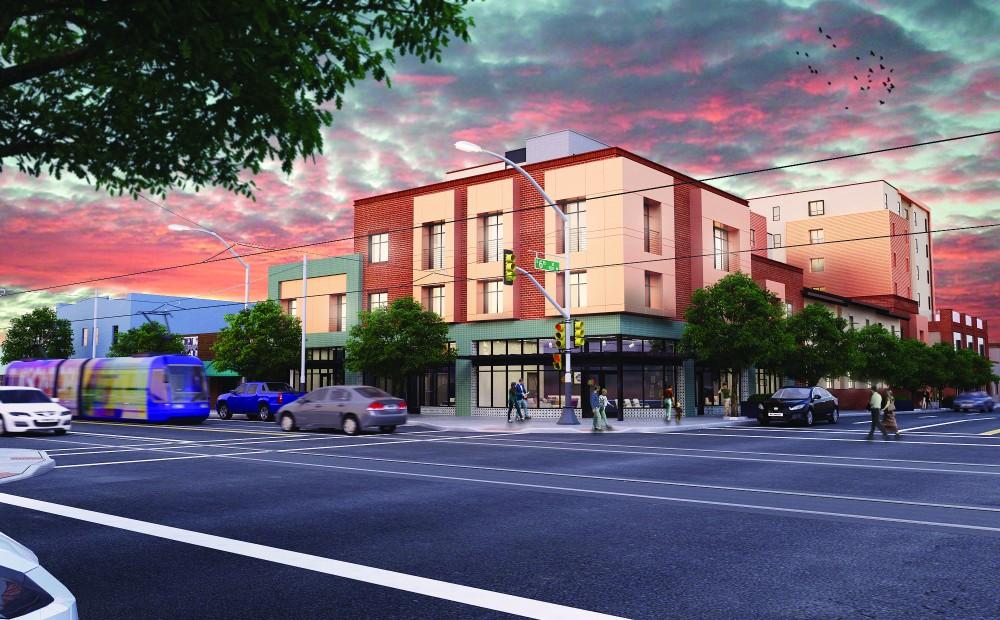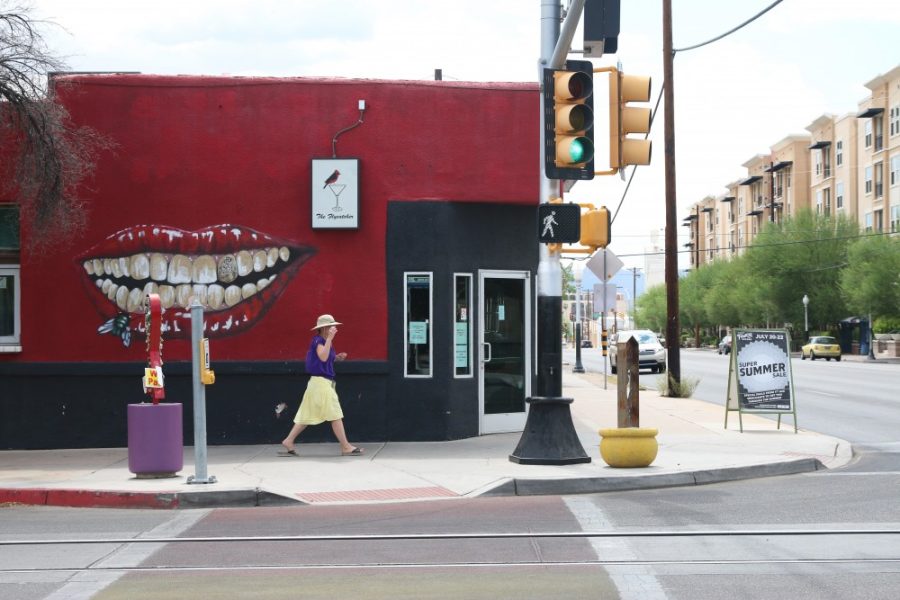A coalition of Fourth Avenue merchants, property owners and a non-profit that promotes locally owned businesses came together recently to counter what some felt was encroachment on the historic avenue by developers.
Nearby neighborhood associations, Fourth Avenue business owners, residents of the surrounding area and Local First Arizona formed the group Save Fourth Avenue about five months ago.
The move was in response to proposed development on Fourth Avenue in general, but specifically at an apartment complex, Union on Sixth, planned for the current site of The Flycatcher, a popular bar and performance venue on Fourth Avenue that closed July 15.

Shannon Riggs, co-owner of Pop Cycle located on Fourth Avenue, said SFA members want to be on the same page as Education Realty Trust Inc., better known as EdR, the developers of the proposed Union on Sixth Street apartment complex.
“We created the coalition in the effort to come to a Community Benefits Agreement with the developer,” Riggs said.
A CBA is a legal contract between a developer and the members of the community, where conditions for a proposed development can be negotiated.
It would require developers of projects like Union on Sixth to fit with the culture and lifestyle of the area, according to Riggs.
“This is our hope for all development going forward in the Fourth Avenue corridor,” she said.
At the beginning of July, SFA released a letter to the city council and local media that hinted at provisions that might be included in a CBA.
Included were requests like, “preservation of local businesses (existing and future) through appropriately sized store fronts (600-1000 sq ft maximum),” and “design that integrates our new Union on Sixth neighbors with the neighborhood.”
Riggs said that SFA is not looking to stop all development, or even the introduction of some large-scale projects. The concerns SFA have come down to preserving what they feel is special about the avenue.
“There is worry that development will quash the independent spirit that has made Fourth Avenue such a vital part of our community,” Riggs said. “We are not anti-development. We just want to encourage ‘smart development’ that integrates with and enhances the daily life of everyone.”
Developer responds, Kozachik unmoved
Public Relations coordinator for EdR Collegiate, Craig Wack, pointed out in an email interview that EdR has not met with members of SFA.
“We have made no formal agreements with any organizations,” he said.
However, Wack said developers pledged to work with the neighborhood and other concerned parties to meet their needs. That included concerns about the projects height.
“The tallest tower of the development will be seven stories high, that section of the complex is located farthest from Fourth Avenue,” Wack said. “The part of the complex that faces Fourth Avenue will be three stories high.”
Wack also responded directly to criticism leveled against the project by Tucson City Councilmen Steve Kozachik in an interview he gave to Inside Tucson Business in February.
In the interview, Kozachik criticized the proposed height of the apartment and the developers designation of the site as a multi-family complex, as opposed to student-apartments. The difference in designation comes down to how space is rented: by room (family) or by bed (student).
“They are trying to thread the needle and rent in a way that makes it look like it’s not student housing,” Kozachik told ITB. “They’re not being up front with people.”
Wack asserted that since the proposed project is an apartment and not a house or commercial space, EdR is being up front about what it intends to build.
“It is by its very definition a multi-family structure,” Wack said. “The intended demographic for Union on Sixth are graduate students and young professionals, which is demonstrated in our unit mix.”
Plans for Union on Sixth call for mostly studio and one bedroom units, according to Wack.
“Housing targeting undergrad students feature mostly three- and four-bedroom units,” he added.
Still, Kozachik remained skeptical. Speaking with the Daily Wildcat, Kozachik still harbored doubts about what the apartment complex’s culture would be, regardless of EdR’s assurances.
He cited EdR’s status as the nation’s largest student housing developer and owner of nearby apartment student-housing complex the District on Fifth, as cause for concern.
“It’s what EdR does, it’s their product,” Kozachik said. “It’s a different student housing product, but it’s still a product that they sell. You can’t do student housing on this property, because the zoning prohibits them from doing group dwelling. The only way that they’re getting around prohibition on group dwelling — which is student housing — is the way that they are leasing the rooms.”
Kozachik also cited his presence on the city council during the development and passage of Fourth Avenues’ Infill Incentive District — an amendment to Tucson zoning code in and around Fourth Avenue and the downtown district — and claimed EdR was violating the spirit of the code.
“If Circle K opens up a store saying, ‘We are not really a convenience market, because we aren’t going to be open 24/7.’ Nobody would buy that and I’m not buying this,” Kozachik said.
Local First encourages community involvement
For its part, the non-profit Local First, known for its advocacy on the part of locally owned businesses, issued a statement through its director for Southern Arizona, Michael Peel, echoing Riggs sentiments for “smart development.”
“Promoting ‘smart growth’ in the economy and best practices to support localism are the most important areas for the movement to work towards in the future,” Peel said. “The new developments on Fourth Avenue present an opportunity to create a long-standing precedent that can support both developers and locally-owned independent businesses and lead to a better mix of economic development benefits.”
Peel said Local First also encourages Fourth Avenue stakeholders, local businesses and developers to buy-in to the concept of a mutually bargained CBA.
“The CBA process is the best short-term option to support locally owned independent businesses with new developments and can move quickly with enough support,” Peel said. “The CBA precedent is one that can be accomplished for the local economy.”
Riggs said she encourages locals and students alike who are interested in helping preserve the culture of the avenue to get involved.
“If you are interested in helping out, check out the Save Fourth Ave: Heart of Tucson’s Facebook Page or website,” she said. “We also put up times for pertinent City Council Meetings or other actions. I encourage folks to engage with our city government through letter writing or attending meetings.”
Follow Jon Rice on Twitter









